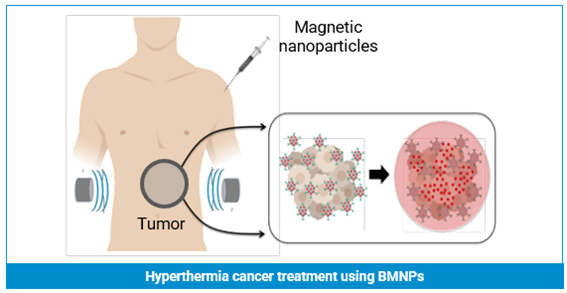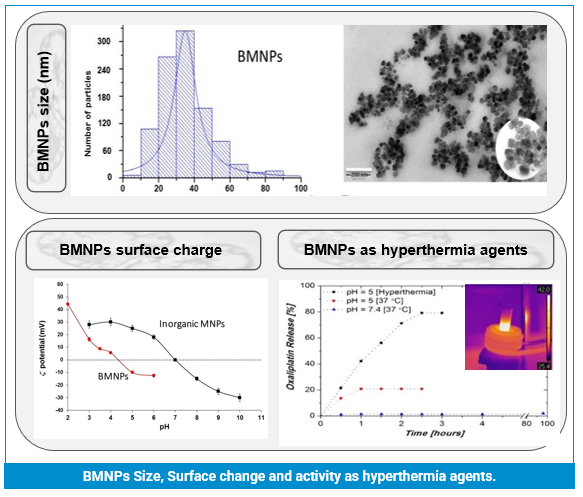Magnetic nanoparticles (MNPs) are currently being used in numerous applications, but they present a series of technological disadvantages, for instance, their variable size, a small magnetic moment per particle, the need for further post-production coating processes to provide functional surface groups that allow functionalization, and, therefore, increased preparation times and costs. Most of the commercialized nanoparticles have a small magnetic moment per particle due to their small size (> 20 nm).
As a result, the efficiency to magnetically guide or concentrate the nanoparticles is reduced. Additionally, commercial nanoparticles must be coated after production with compounds that provide functional groups to allow the binding/release of drugs, antibodies, or other agents. This introduces additional steps in the production process and shields the magnetic core interfering with the magnetic response of the nanoparticle, reducing even further the efficiency of the nanocarriers.
The researchers have developed biomimetic magnetic nanoparticles (BMNPs) by means of a method which is time- and cost- efficient as well as scalable. Not only avoids the generation of by-products, the use of toxic agents or extreme physical conditions, but also, produces biocompatible BMNPs of around 40 nm with large magnetic moment per particle.
Although these properties make BMNPs a very useful tool for numerous applications, the technology is very promising for clinical applications, particularly for the treatment of cancer and/or localized infection. They have been proven to be effective drug delivery systems both on their own and encapsulated in liposomes (magnetoliposomes), with increased biocompatibility in comparison to current nanoparticles. They have also been proven to be effective hyperthermia agents.
Researchers have performed in vivo tests in mice with the BMNPs as drug-delivery and hyperthermia agents for cancer treatment. The assays have shown better results than non-targeted chemotherapy, reducing tumor size more efficiently and without side effects.
The technology has been tested in vitro for breast, liver and colon cancer and for bacterial infections. It has also tested successful for other applications, like enzyme fixation and recycling for biotechnological processes, and bacterial pathogen biosensors.
Benefits:
- The method proposed is easily scalable and enables the production of pure BMNPs.
- The nanoparticles are superparamagnetic, single magnetic domain and have large magnetic moment per particle, preventing agglomeration and producing a more specific response when an external magnetic field is applied.
- The BMNPs have functional groups at the surface that allow functionalization with the relevant molecule. It also prevents the extra coating steps, reducing production time and costs.
The represented institution is looking for a collaboration that leads to commercial exploitation of the presented invention.
Institution: Universidad de Granada
TRL: 4-5
Protection status: Granted Patent
Contact: Nuria Bas / nuria@viromii.com



